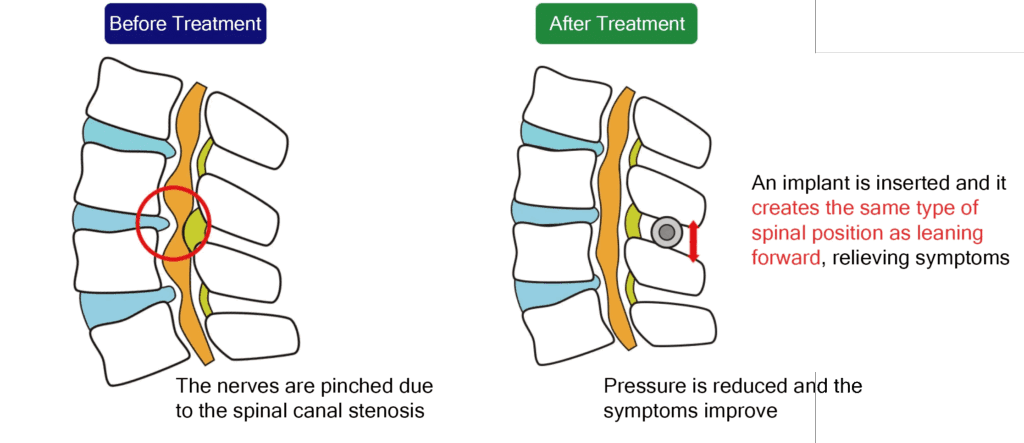October 10, 2025
Lumbar Degenerative Spondylolisthesis (LDS) is a frequently reported spinal disorder, with a prevalence rate of 10–15%, comparable to lumbar disc herniation and lumbar spinal stenosis.
In this article, we will explain management strategies for spondylolisthesis according to symptom severity.
What is Spondylolisthesis?
Spondylolisthesis is a condition where a vertebra in the lumbar spine (lower back) slips forward or backward out of its normal position relative to the vertebra below it.

Severity Grading of Spondylolisthesis
Spondylolisthesis is categorized into four grades based on the degree of slippage of the vertebra:
・Grade 1: 0–25% slippage
・Grade 2: 25–50% slippage
・Grade 3: 50–75% slippage
・Grade 4: 75–100% slippage

Symptoms and Management Strategies by Severity
Mild Spondylolisthesis
In its mildest form, lumbar spondylolisthesis can sometimes be asymptomatic.
When present, symptoms may include mild lower back pain, numbness or discomfort in the legs, and a feeling of fatigue in the lower back after standing or walking for long periods.
Recommended measures include:
・Keeping the lower back warm
・Maintaining correct posture
・Engaging in moderate exercise such as walking
・Strengthening the core muscles through gentle training or stretching
・Avoiding prolonged static postures
Moderate Spondylolisthesis
When slippage progresses to a moderate level, symptoms become more pronounced, with back pain, leg pain and numbness, muscle weakness, and difficulty walking. Leg symptoms may worsen during walking and improve with rest, and walking distance may gradually become limited.
Depending on the severity, conservative treatment may be sufficient.
Management includes:
Depending on the severity of symptoms, conservative treatment may be sufficient. A back brace may be worn to reduce strain on the back muscles. For severe pain, anti-inflammatory analgesics or nerve block injections may be used to alleviate symptoms. Rehabilitation may also include stretching and core muscle training focused on the abdominal muscles around the waist.
If conservative care does not lead to improvement and symptoms persist, surgical intervention may be recommended.
Severe Spondylolisthesis
When the slippage progresses to Grade 3 or higher, it often leads to significant nerve compression symptoms. In addition to back pain, patients may experience buttock and leg pain, numbness, and intermittent claudication (pain and fatigue in the legs while walking).
Pain often worsens when arching the back, and it becomes difficult to maintain certain postures.
In advanced cases, bladder or bowel dysfunction may occur.
Treatment may begin with medication to manage pain, but in many cases, surgical procedures such as decompression (to relieve pressure on nerves) or spinal fusion (to stabilize the spine) are advised.
Our Clinic’s Treatment Options
At our clinic, we offer Florence and Q-Florence procedures for patients with spondylolisthesis.
Both are minimally invasive treatments designed to reduce risk and recovery time.
Under local anesthesia and sedation, a small device is inserted percutaneously to expand the narrowed spinal canal.
This helps stabilize the spine while maintaining its natural motion and reduces disc protrusion and ligament thickening.
As the spinal canal reopens, pain and nerve compression are relieved.

Learn more about the Florence Procedure
Learn more about the Q-Florence Procedure (article in Japanese)
If you have been diagnosed with spondylolisthesis or continue to suffer from persistent lower back or leg pain, we encourage you to schedule a consultation at our clinic.
Related Articles
Is it Spondylolisthesis? How to Check if You Have The Symptoms
What Causes Lumbar Spondylolisthesis? People Who Lead This Kind of Lifestyle Should Exercise Caution
The Daily Movements and Exercises That You Should NEVER Do if You Have Lumbar Spondylolisthesis
A must Do for Patients with Spondylolisthesis: Simple Stretches that Relieve the Pain



